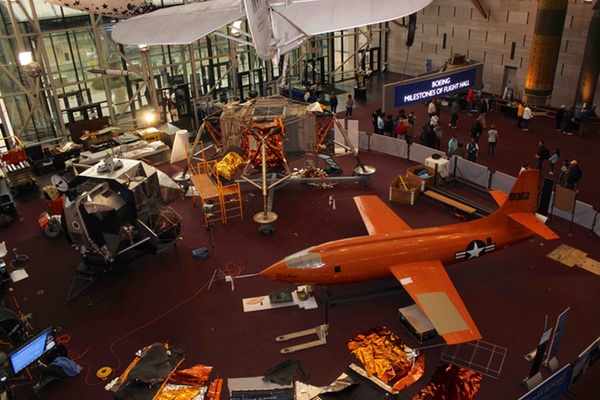Putting the pieces back together againby Dwayne Day
|
| The Milestones of Flight Gallery has always leaned more towards memorializing than educating—the artifacts it contains are on pedestals to be worshipped, not really understood. |
The Milestones of Flight Gallery is currently being renovated, and because the National Mall entrance is on that side of the building, it is not completely closed off to the public. The gallery renovation will continue to July 2016, the fortieth anniversary of the museum’s opening. When it is finished it will contain new displays and a few new artifacts. The Lunar Module was previously located on one end of the museum, near the restaurant. The Enterprise model from the original Star Trek television show, currently undergoing restoration at the Steven F. Udvar-Hazy Museum out near Dulles Airport, will also be moved to the gallery.
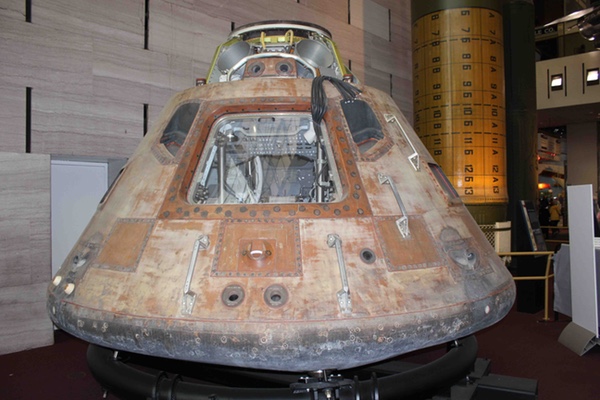 The Apollo 11 command module is now outside of its protective box, sitting flat instead of at an angle. (credit: D. Day) |
Previously the Spirit of St. Louis and SpaceShipOne were lowered from the ceiling, cleaned up, and re-hung, with SpaceShipOne taking the Bell X-1’s spot. The X-1, named Glamorous Glennis after Yeager’s wife, is still on the floor, its hatch open. The Apollo 11 capsule, which was mounted on an angle, was finally set flat and the clear protective covering that kept grubby tourist fingers off of it was removed. The Mercury and Gemini spacecraft that used to sit near the door were taken out to Udvar-Hazy before the Apollo 11 was moved over to a temporary spot by the Pershing II ballistic missile.
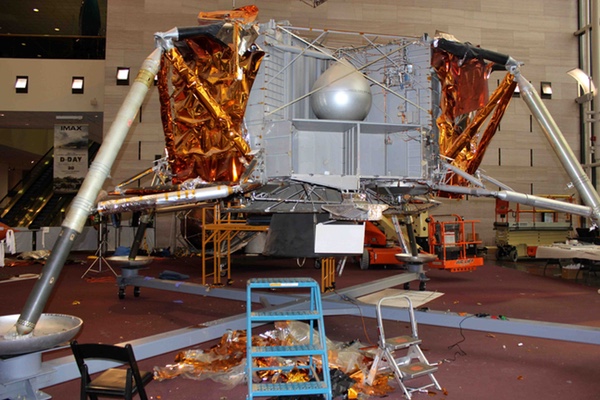 The base of the Lunar Module, currently separated from the ascent stage. (credit: D. Day) |
This is a logistical challenge, because big objects have to be moved out of the way before other big objects can be moved by, and of course everything has to be done carefully so as not to damage one-of-a-kind artifacts. Fortunately, the museum has a special team trained in moving big things like aircraft and spacecraft.
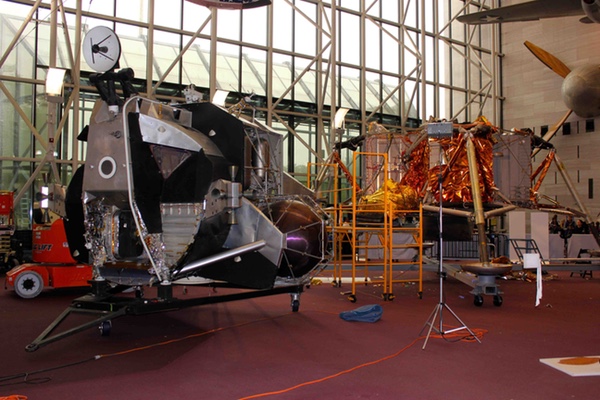 The two sections of the Luanr Module, sitting side by side in the gallery. (credit: D. Day) |
One of the big differences between aviation and space artifacts is that there are relatively few examples of the latter. Spacecraft usually don’t return to Earth and the Lunar Modules all went on one-way trips. The LM in the museum’s collection is Lunar Module-2, one of only two (and a half) completed LMs that never made it to space. LM-2 was intended to fly unmanned but instead got diverted to ground testing.
As of Friday, LM-2 had much of its protective aluminized Kapton insulation removed, revealing the metal structure underneath. Museum technicians will replace the insulation and then lift the ascent stage back on top of the descent stage.
Despite all the work, this is really just a prelude to a much bigger effort that the museum will undertake in the next few years. As the museum building reaches its four-decade mark it needs upgrades to its basic infrastructure. Moreover, an inspection after the August 2011 earthquake that affected Washington revealed that the building’s exterior marble walls were not installed to spec and the entire exterior of the building has to be replaced, forcing closure of major parts of the museum on a rolling renovation schedule. This is going to be time-consuming, inconvenient, and very expensive.
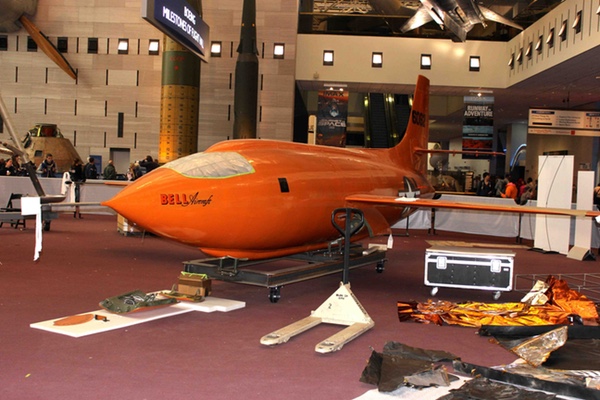 Bell X-1 flown by Chuck Yeager is on the museum floor, its hatch open. (credit: D. Day) |
But despite the hassle, the museum also needs a major thematic makeover. The National Air and Space Museum looks like a 40-year-old museum. The galleries are dated, with very few of them benefiting from technology from this century. Kids who walk into a modern museum and see a video display immediately touch it, expecting an interactive experience. Nobody these days wants to actually read a label: they expect that their mobile devices will tell them the details. And the museum itself has always struggled with its twin tasks of educating and memorializing. The Milestones of Flight Gallery (now the Boeing Milestones of Flight Gallery after the plane maker donated a large amount of money to the museum) has always leaned more towards memorializing than educating—the artifacts it contains are on pedestals to be worshipped, not really understood.
So as the museum curators and technicians put their artifacts back together again, they will also be putting the museum’s role in American society back together, probably in a slightly different and much more updated way. It will be a glorious mess getting there.
